What Is Dethatching?
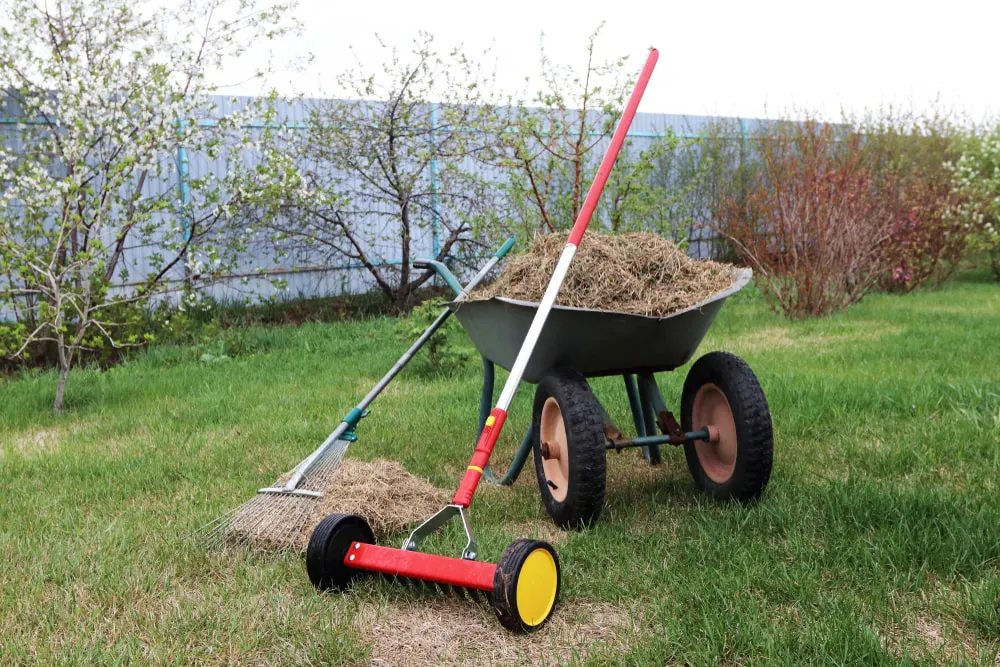
Perhaps you’ve heard of dethatching but know very little about it and would like to learn more. Well, you’ve come to the right place!
What is dethatching, anyway? And how does dethatching help your lawn? Dethatching is the process of removing excessive thatch. By doing this, you can keep your grass looking healthy and beautiful!
Thatch is a mat-like layer of organic material that rests between grass blades, fixed roots, and the layer of soil below. A bit of thatch isn’t harmful to your lawn. In fact, it has some benefits, such as providing nutrients, preserving soil moisture, and blocking out burrowing pests. However, excessive thatch can be too much of a good thing. It can cause your grass to lose its color and turn the ground spongy to the touch, among other things.
Fortunately, you can remove thatch from your lawn by giving it a deep and powerful raking with dethatching equipment. What is dethatching equipment? Keep reading to learn more about lawn dethatching tips and benefits!
Table of Contents:
What Are the Benefits of Dethatching a Lawn?
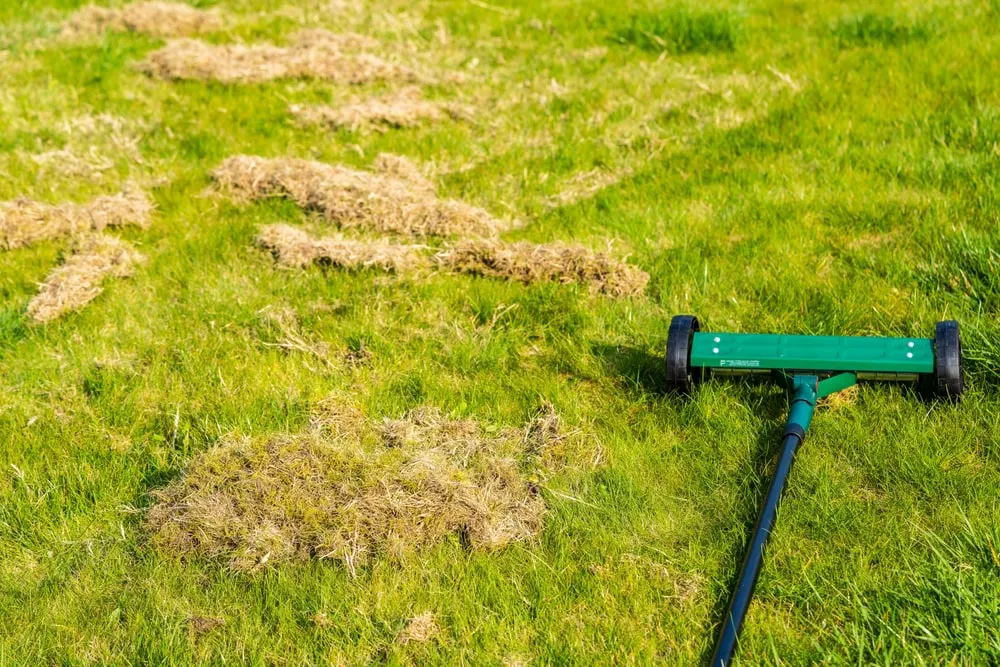
Deciding to dethatch your lawn is a smart move because it has the following benefits:
- Gives the roots of the grass greater access to essential nutrients, water, and air.
- Improves the health of the soil.
- Improves nutrient density.
- Enables the lower grass shoots to have more access to sunlight.
- Encourages root growth and strengthens roots.
- Can help save water.
- Controls weed invasions.
- Enhances the look and health of your grass.
- Makes your lawn less susceptible to fungus, disease, and pests.
- Helps improve the efficacy of fertilizer.
- Can help winterize your lawn.
Does My Lawn Need Dethatching?
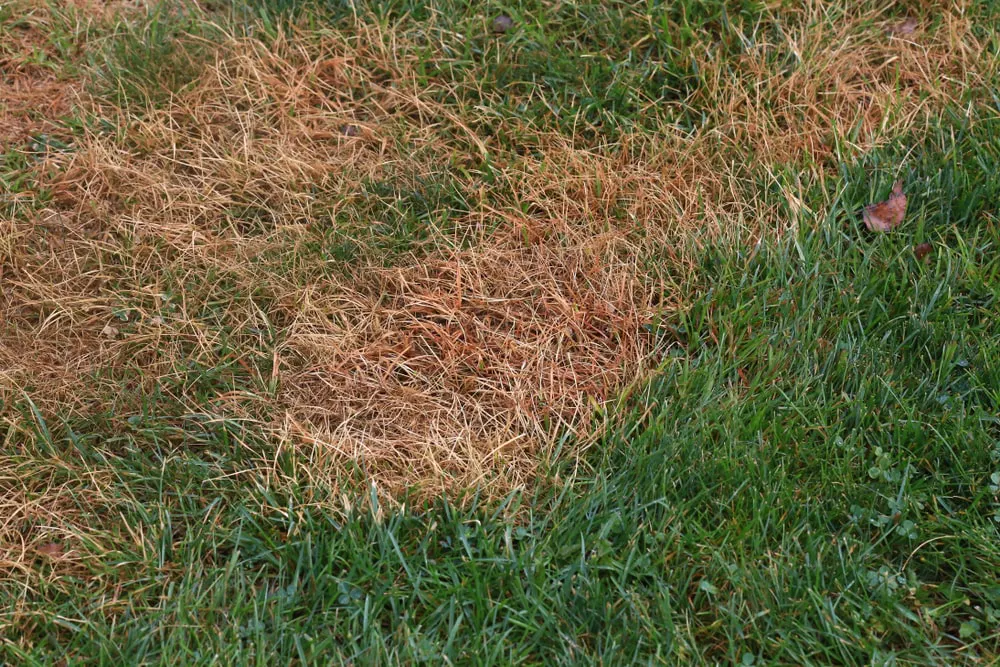
There are some conditions to look out for that may indicate the need to remove thatch from your lawn. Tell-tale signs that your lawn needs dethatching include the following:
- The blades of grass are weak.
- When you walk on the grass, it feels spongy and springy.
- The grass is challenging to mow.
- The grass looks like it’s thinning.
- There are dry spots on the grass.
- Your once lush and beautiful lawn is losing its green color.
- Your lawn has become a breeding ground for insects.
- Your lawn has become a hotbed for fungal diseases.
You can also determine whether thatch should be removed by measuring its thickness. The easiest way to do this is by removing a 3-inch sample of your lawn with a shovel. You’ll want to measure the brown, spongy layer in the middle of the grass blades and the soil surface. If the layer is more than half an inch thick, it’s time to consider dethatching.
Another way to assess the need for thatch removal is by poking your finger through the soil. If it’s too hard, you may have a thatch problem.
If you’re unsure if your lawn needs dethatching, the professionals at The Grounds Guys will be happy to provide an on-site evaluation.
When to Dethatch Your Lawn
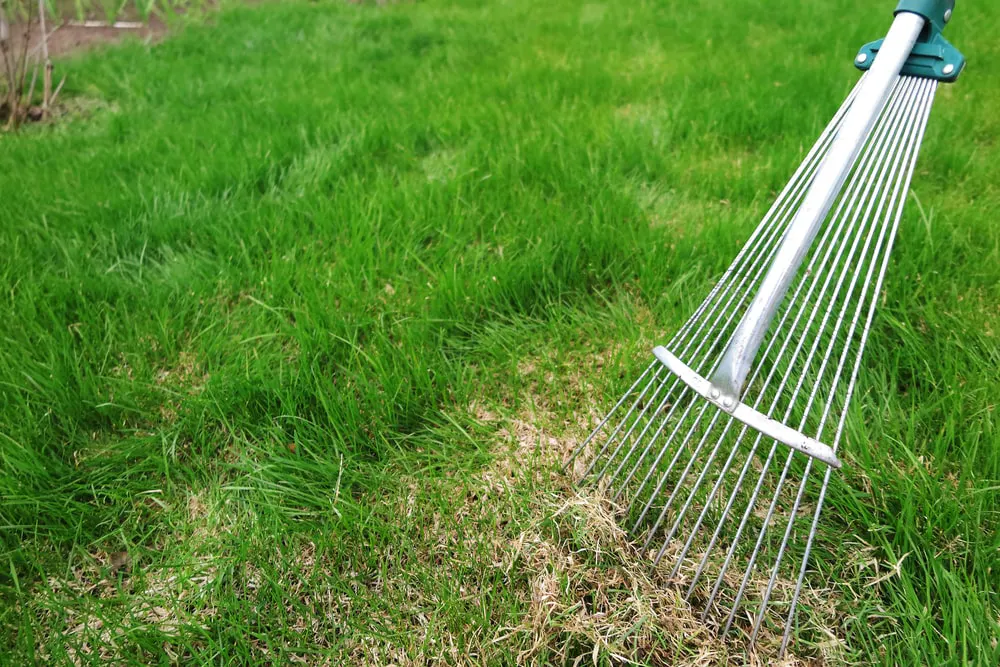
A great time to dethatch your lawn is during its growing season. Of course, the best time of year to dethatch your lawn depends on what part of the U.S. you live in. For cool-season grasses (northern parts of the U.S.), you’ll want to remove thatch from your lawn in early spring or later summer to early fall. If yours are warm-season grasses (southern parts of the U.S.), you’ll want to dethatch in late spring to early summer. Never start the dethatching process when your lawn is stressed or dormant, and be sure to avoid dethatching during a drought or the peak of summer. Doing so can cause severe damage to your lawn.
One of the most important lawn dethatching tips is to not rush into the process. If your lawn is new, it’s best to wait several years to dethatch it. Dethatching can be rough on a new lawn, and if power equipment is used, it can cause significant damage that could require the replacement of some or all of your lawn.
How to Dethatch Your Lawn
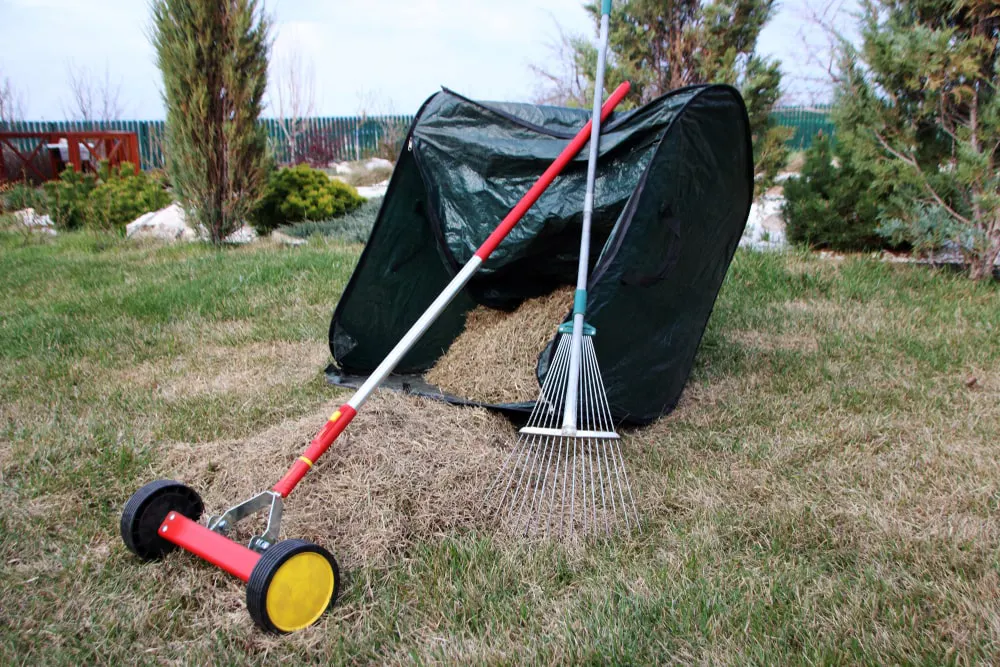
You can remove thatch from a lawn yourself, but when there’s an excessive amount, it can take more than one session. If you have never dethatched a lawn before, you might remove too much and damage the roots of the grass. You will also need specialized tools to do the job correctly, such as thatch rakes (ideal for small lawns), electric dethatchers (for medium-sized lawns), power rakes, and vertical mowers or verticutters (suitable for large lawns). Depending on the size of your lawn purchasing or renting this equipment can be costly. Therefore, if you don’t have experience or the right equipment, consider hiring a professional to dethatch your lawn. A professional will have the knowledge and equipment needed to do this job effectively and efficiently.
What Causes Excess Thatch?
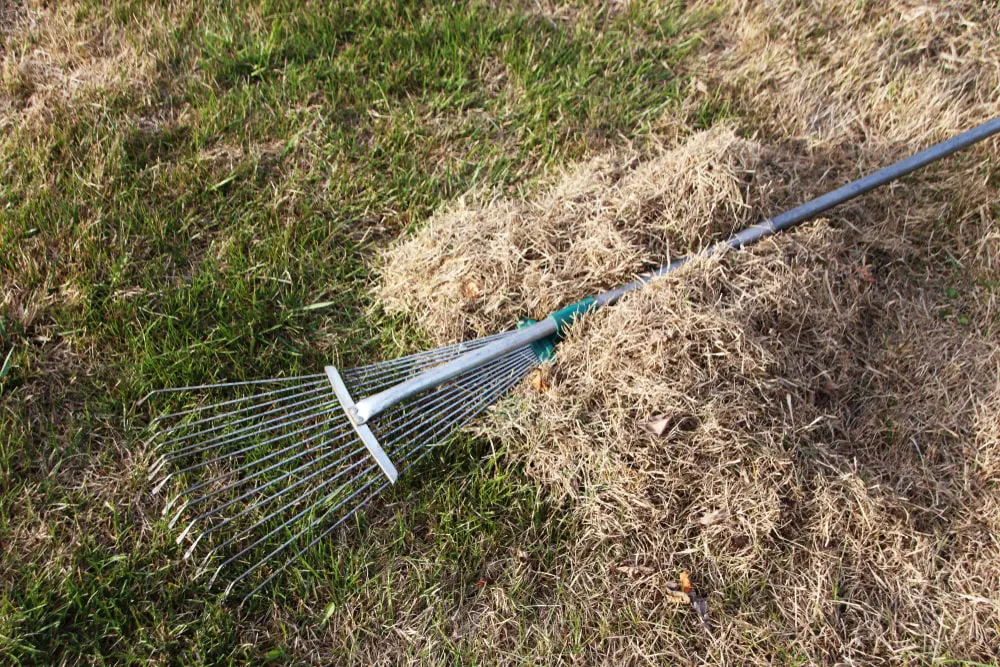
Excessive thatch can accumulate quickly. Several factors contribute to excess thatch, including the following:
- Overwatering
- Adding too much nitrogen fertilizer
- Poor quality of subsoil beneath the sod
- Nutrient-poor soil
- Acidic soil
- A lack of earthworms (pesticide applications can keep them away)
How to Prevent a Thatch Problem
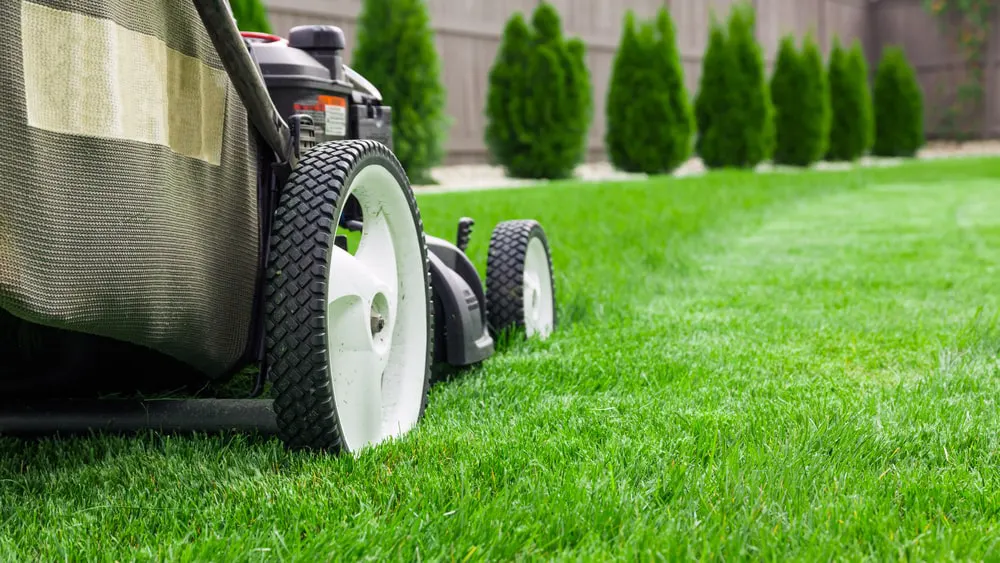
Fortunately, you can prevent thatch from getting out of hand with the proper lawn care practices. You can do the following to avoid a thatch problem:
- Try not to overfertilize, especially if using a fertilizer high in nitrogen.
- Perform a soil test every three to five years. For more information, contact your local lawn care experts.
- Mow your lawn regularly.
- Stay away from pesticides and fungicides that can kill earthworms.
- Don’t overwater your lawn! You can water it about 1 to 1.5 inches deep once a week.
When to Call a Professional
Lawn dethatching isn’t tough to do yourself. But it is labor-intensive, time-consuming work, and if you have a medium to large yard with a thick layer of thatch, it requires specialized equipment.
Renting tools that will only be used occasionally and require some experience, may be too much for many homeowners. This is why most homeowners choose to hire a local landscaping professional like The Grounds Guys. We have the experience and all the right equipment, so you can rest assured that your lawn will receive the best care possible.. Plus, we stand by all our work with the Neighborly Done Right Promise™, which means our job is not done until you’re completely satisfied. You can request a free estimate online or contact us today for more information.
 Click to call
Click to call


